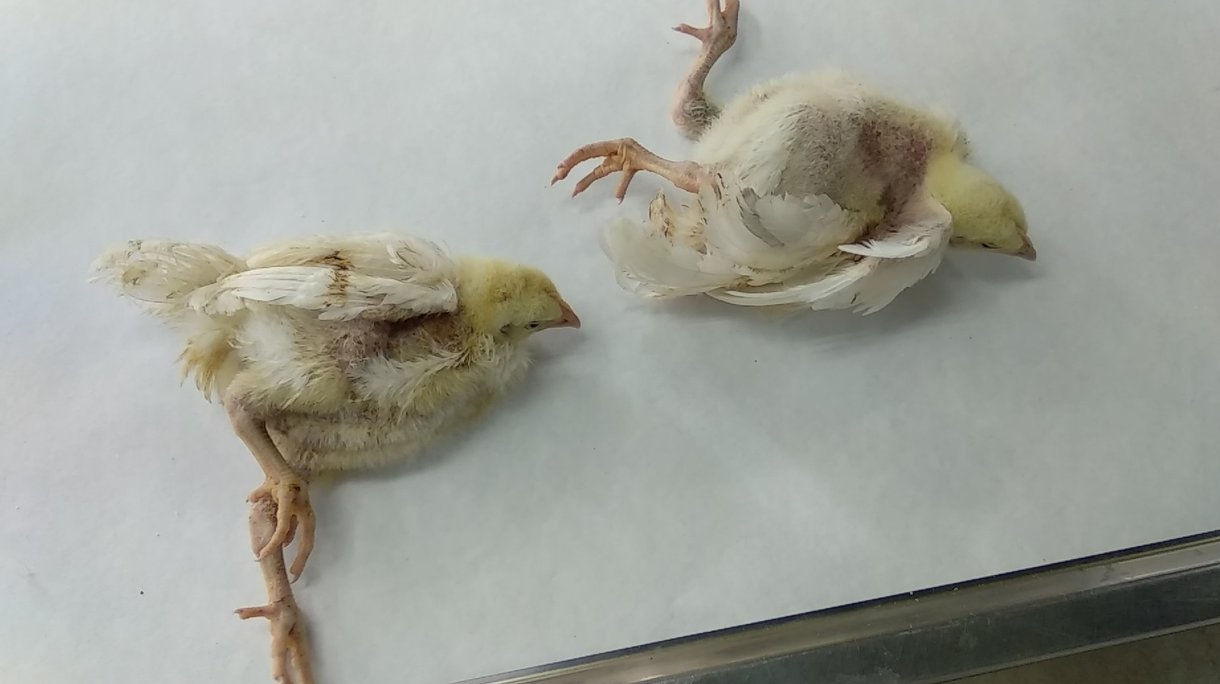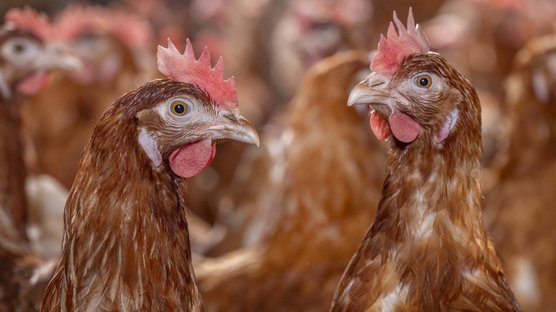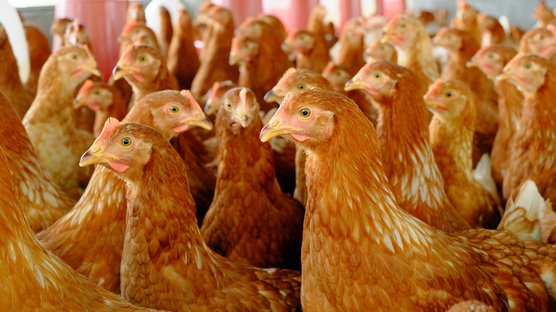
Published on Oct. 19, 2020
Avian Encephalomyelitis (AE) in chickens
Avian encephalomyelitis (AE) or epidemic tremor is an infectious viral disease affecting chickens, turkeys, pheasants and quail.
Avian encephalomyelitis virus (AEV) is an enterotropic virus, infectious by the oral route. The virus replicates in the intestine and is excreted in the feces.
Infected litter spreads the virus either via direct bird to bird contact or via fomites (contaminated equipment, vehicles, people, …).
Besides this horizontal transmission, AEV can also be vertical transmitted. When susceptible parent stock flocks get infected after sexual maturity, they will infect part of their progeny during the period of viremia (about 2 weeks).
In young birds, primary infection takes place in the alimentary tract, followed by a viremia and subsequent infection of the central nervous system (CNS). In older birds, infected orally, no viral antigen is found in the CNS, explaining why infected adults show no neurological signs.
AEV is a Picorna virus, quite resistant to environmental conditions.
Clinical Signs
Ataxia and tremors of the head and neck in 1-2 weeks old chicks are typical. No significant macroscopic lesions are seen in affected birds, but some survivors can develop cataracts at later age.
There seems to be a marked age resistance starting around 3 weeks of age.
Mature birds can show a temporary drop in egg production but do not develop neurologic signs. In breeder flocks, hatchability also drops due to late embryonic mortality.
Diagnosis
Clinical history, histology of the brain and antigen detection are conclusive. The brain is the best source for PCR or virus isolation.
Serology can be done with Elisa.

Control & Vaccination
Maternal derived antibodies (MDA’s) fully protect chicks against disease. Parent stock must be vaccinated at least 4 weeks before the onset of lay.
It is also advised to vaccinate commercial layers to prevent a drop in egg production.
References
- Diseases of Poultry 14th Edition. David L. Suarez
- Picture of affected chicks: CESAC



